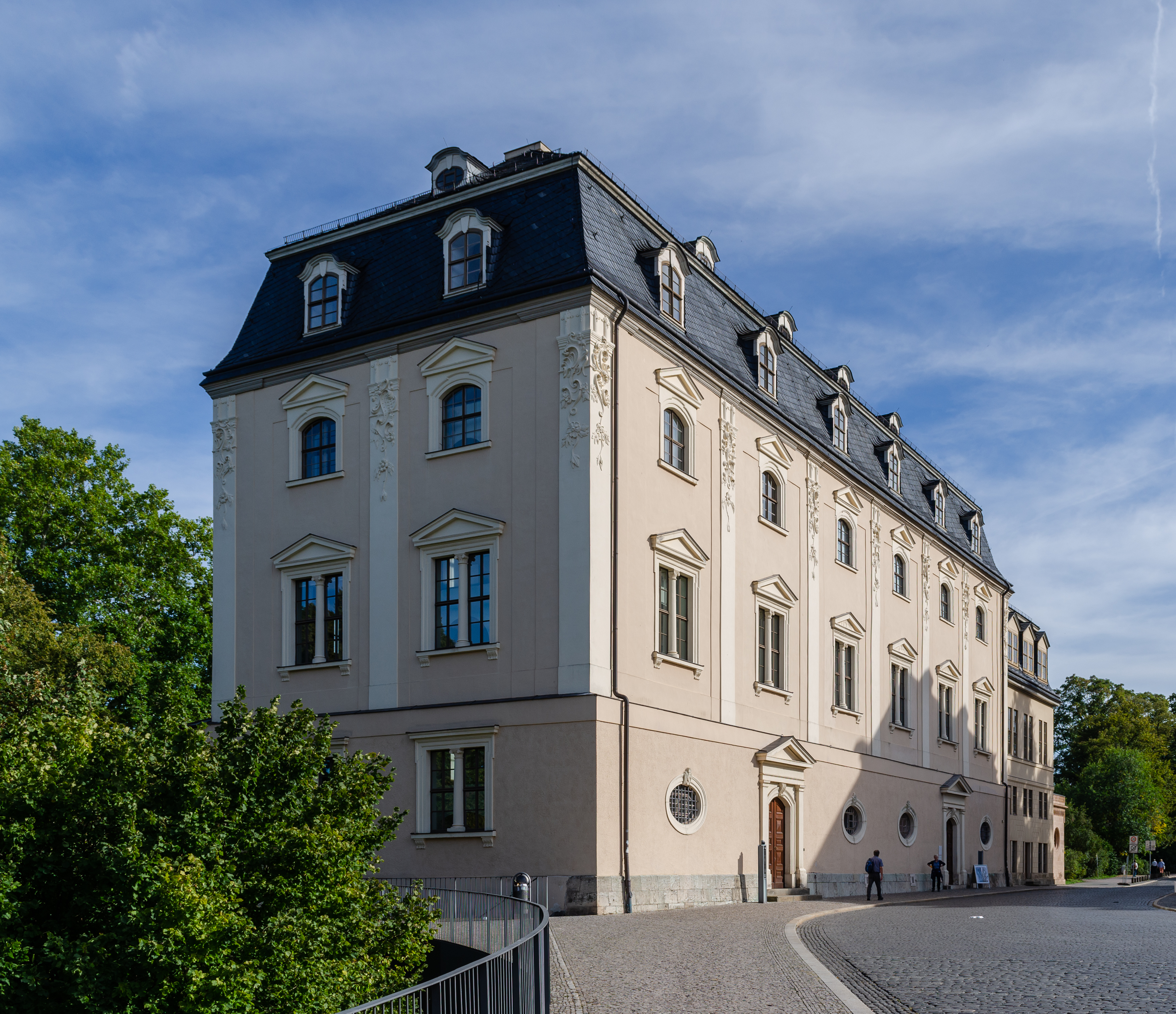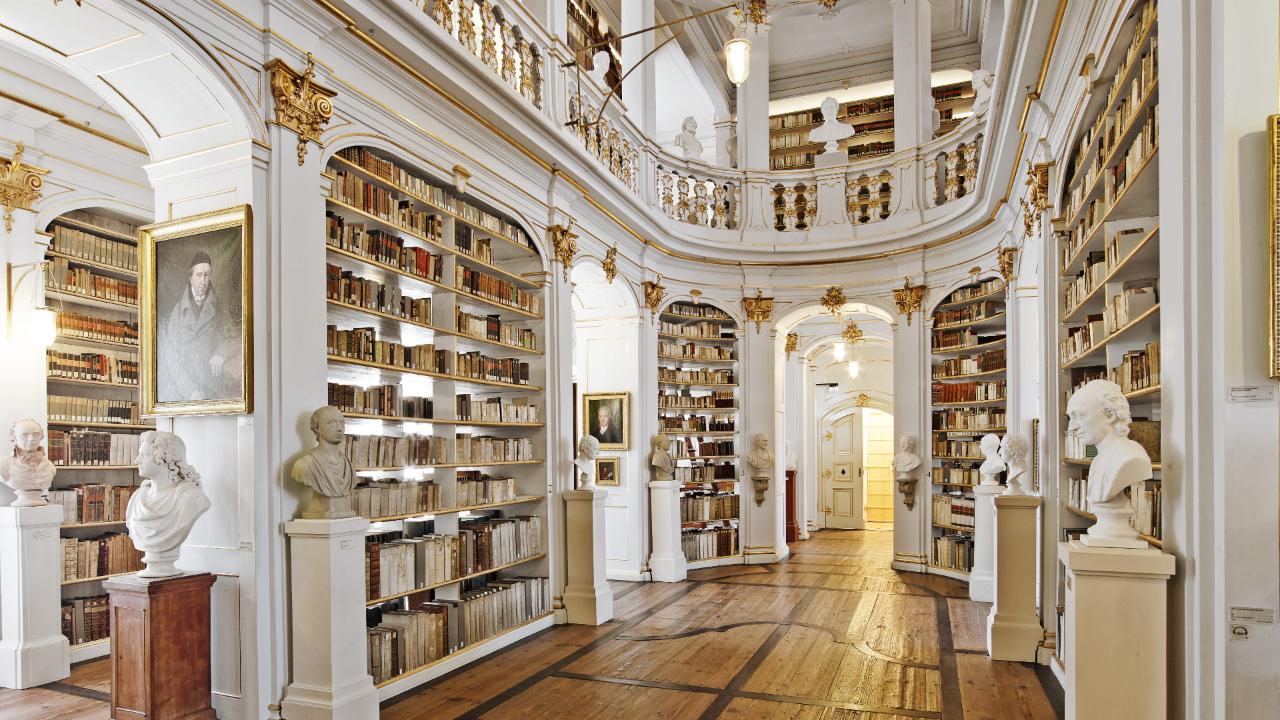
Duchess Anna Amalia Library
The Luther Bible as the Centrepiece
In September 2004, shortly before the planned renovations began, the top two floors of the building were completely destroyed by a smouldering fire in the roof timber area. The damaged historic library building with its famous Rococo Hall has been open to visitors again since 2007, but 50,000 works were irretrievably destroyed by the disaster. The historic library building with its well-known Rococo Hall is part of the UNESCO World Heritage Site “Classic Weimar” and is the only witness to the cultural era of Classic Weimar that reflects Weimar’s outstanding role as a centre of religious activity in the late 18th and early 19th century. A limited number of visitors can visit the historic building with the Rococo Hall. Important parts of the libraries collections can be discovered on a tour with the large felt slippers. If you take a look at the floor, you can still see traces of the fire when you look closely at the old parquet flooring.

Rococo Hall of Duchess Anna Amalia Library ©Jens Hauspurg, Thüringer Tourismus GmbH
Although the library was only founded 150 years after Luther’s death, the Ernestines handed the numerous records of the Reformation down from generation to generation. The oldest stock includes Luther’s Weimar writings, and almost three quarters of all contemporary printed editions of Luther’s writings. The centrepiece of a unique collection of Bibles is this collection is a magnificent Luther Bible from 1534. The family register of Heinrich Kohlhans, bound in light-coloured pigskin leather, which includes inscriptions by Martin Luther and Nikolaus von Amsdorf amongst others, is also valuable.
Since June 2022, visitors have been able to see a multimedia exhibition on the art of the Reformation in the 16th century entitled “Cranachs Bilderfluten” (Cranach’s Torrent of Images). High-quality paintings, graphic works, medals and books by Lucas Cranach the Elder, Lucas Cranach the Younger and their workshop are on display in the Renaissance Hall of the Anna Amalia Bibliothek. Amongst these works, you will also find the portrait “Martin Luther as ‘Junker Jörg’”, which was produced in around 1522 in Wittenberg.
Header: ©Steffen Schmitz
Information for Guests
Information of the Museum
Information of Architecture
In the mountain
Mobility Offers
Offers and service
Area
Congress facilitys
Distances







